Bond LSC Research
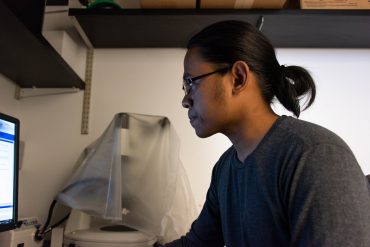
May 12, 2021
Beyond counting: computer science partnership helps speed up plant science experiments
Janlo Robil, graduate student in the Paula McSteen lab, came up with the GrasVIQ project after he finished a project that required him to count hundreds of plant leaf veins. | photo by Lauren Hines, Bond LSC By Lauren Hines | Bond LSC It’s not surprising that researchers feel discouraged when pursuing projects that involve plant leaf vein density analysis. Manually counting individual leaf veins and measuring their density to understand how nutrients are transported in plants can take weeks of tedious work. That’s how Janlo Robil was feeling when he was working on a maize…
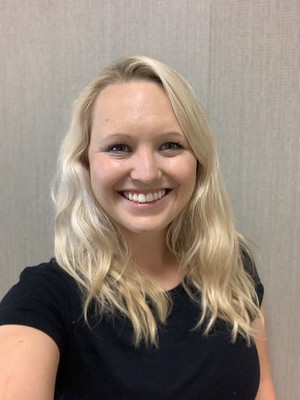
April 21, 2021
Diller Costello Awarded Highly Competitive NIH Fellowship
By Lauren Hines | Bond LSC Alexandra Diller Costello, a biology graduate student in the D Cornelison lab in Bond Life Sciences Center, recently received a three-year NIH fellowship from the National Heart, Blood and Lung Institute. It provides Diller Costello with funding to pursue her work on muscle and blood vessel regeneration for three years. The fellowship comes as a result of her proposal titled, “Signaling in the Microvasculature During Skeletal Muscle Regeneration.” Diller Costello’s research focuses on the coordination between muscles and blood vessels during muscle regeneration in adult mice. Diller Costello…
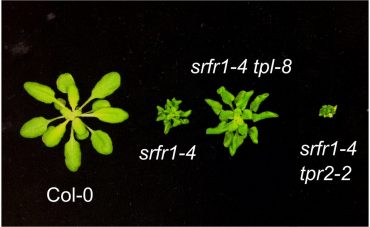
April 7, 2021
Defense or growth: a complicated balance
The figure shows the wild type of the plant to the left. The mutant type to the far right shows when the negative regulator SRFR1 and the TOPLESS gene TPR2 are absent in a plant, the immune system intensifies and the plant stops growing. | Photo contributed by Walter Gassmann, Bond LSC. By Lauren Hines | Bond LSC The plant immune system isn’t active all the time. Plants must decide to either defend against disease or grow, but not simultaneously. The reason behind this process is not fully understood, and the Walter Gassmann lab at…
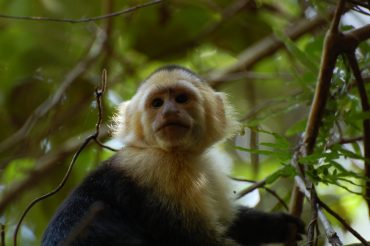
March 2, 2021
Genetic link in primate points to source of adaption and longevity in capuchins
As part of an international collaboration, principal investigator Wes Warren helped study capuchins in Costa Rica. | Photo contributed by Amanda D Melin, Bond LSC. By Lauren Hines | Bond LSC Through monkey poop and three years of work researchers from all over the world sequenced the Panamanian white-faced capuchin genome for the first time and devised novel methods to sequence many more wild capuchin genomes. These monkeys have large brains for their small size and can live past 50. Wes Warren — Bond Life Sciences Center principal investigator — helped sequence the genome to find…
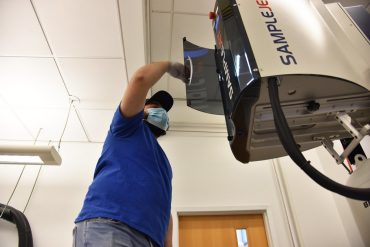
Feb. 16, 2021
From Sample to Source
Metabolite screening looks to better understand cancer Research scientist Rajarshi Ghosh in the Lloyd W. Sumner lab loads samples into the Nuclear Magnetic Resonance (MNR) spectrometer for analysis. | Photo by Lauren Hines, Bond LSC. By Lauren Hines | Bond LSC Doctors take blood or urine samples to see what’s going on in the body of a patient, and that’s not all that different from what metabolomics scientists do when looking at metabolites. “[The doctor] may profile 20 or 30 compounds to try to understand what’s going on with your physical health and well-being,” said Lloyd…

Jan. 26, 2021
Bond LSC Researchers Named Most Highly Cited for 2020
Bond Life Sciences Center principal investigators Bing Yang (left) and Ron Mittler (right) are pictured above. | photos by Erica Overfelt, Bond LSC. By Lauren Hines | Bond LSC Building onto previous knowledge is a pillar of the scientific process, and citations in research do just that. This makes recognition of Bond Life Sciences Center principal investigators Ron Mittler and Bing Yang, as well as Mizzou biochemistry professor Shuqun Zhang in the Highly Cited Researchers list for 2020, an important acknowledgment. “I’m glad to have this, and this is the second year…
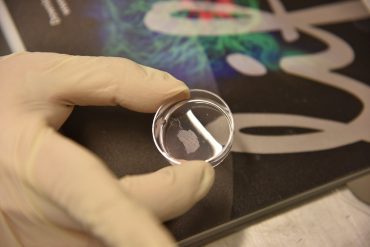
Jan. 4, 2021
The Group Approach
Cell sheet development promises better treatment for destroyed tissue After 30 minutes on ice, a cell sheet begins to materialize in the fluid. | photo by Lauren Hines, Bond LSC. By Lauren Hines | Bond LSC Imagine a sticker a few centimeters wide and as thin as a strand of human hair except made of cells. For medicine, this sticker — called a cell sheet — can regenerate tissue damaged by chemotherapy radiation wherever it’s placed. Kihoon Nam uses cell sheet technology to help head and neck cancer patients who have lost the ability to produce…
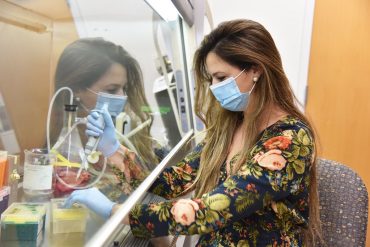
Dec. 14, 2020
Visiting professor wins women in science award
Imbalance in research is steep, but visibility and confidence key factors for women Victoria Calzada is visiting the Donald Burke-Agüero lab from Uruguay to study aptamers. | photo by Lauren Hines, Bond LSC. By Lauren Hines | Bond LSC Victoria Calzada was in the corner of the Donald Burke-Agüero lab, focused on her computer when she missed an important call. Eventually, she stood up from her bench and listened to the voicemail. She had won the 2020 L’Oréal-United Nations Educational Science and Cultural Organization (UNESCO) Women in Science award for her country, Uruguay. “It was very…
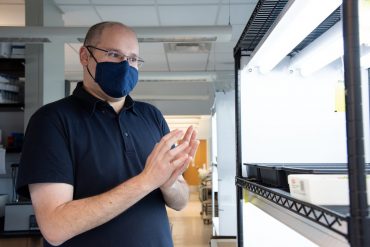
Nov. 17, 2020
Bad Boys of Biology Turned Good
Yosef Fichman, post doctorate fellow in the Mittler lab, walks through how the lab uses arabidopsis plants for certain experiments. | photo by Lauren Hines, Bond LSC. By Lauren Hines | Bond LSC Shaking a bad rap can be hard. However, the Ron Mittler lab at Bond Life Sciences Center has shifted the scientific community’s thinking from seeing reactive oxygen species (ROS) as destructive to vital. “It’s always a challenge when you do something for the first time, and people don’t always believe you,” said Mittler, principal investigator. “They want you to prove it.” ROS are…
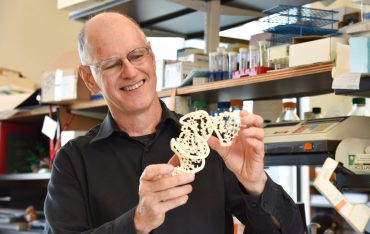
Nov. 9, 2020
Unknown Origins
$5 million grant awarded to study RNA’s place in start of life on Earth In his lab at Bond LSC, Donald Burke-Agüero examines his model of the RNA protein structure. | Photo by Lauren Hines, Bond LSC By Lauren Hines | Bond LSC The search for life on other planets may seem quite literally out of reach, but the search actually starts here, on Earth. “Something that guides people in thinking about how life might come about on other worlds is trying to understand how life might have started here on this planet,” said Donald Burke-Agüero,…
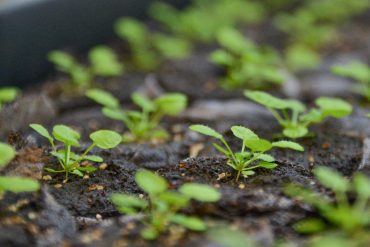
Nov. 5, 2020
Shining Light on Plant Reaction
Arabidopsis grows in Ron Mittler’s lab. | photo by Becca Wolf, Bond LSC By Lauren Hines | Bond LSC Daylight might not seem dangerous, but for plants, too much daylight can cause hazards similar to a nasty sunburn or a human scalding themselves. When you jerk your hand back from a boiling pan or a hot faucet, in a millisecond electrical signals are sent up your arm to tell your brain to move away. Like this reaction, plants have their own protective reactions to too much light. “I think what you need to understand is that plants…
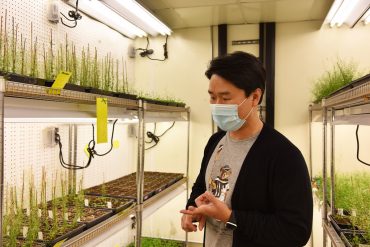
Oct. 26, 2020
Learning From History
Sung-Hwan Cho, a research scientist in the Gary Stacey lab, checks in on the arabidopsis plants that he uses in his purinergic signaling experiments. | photo by Lauren Hines, Bond LSC. By Lauren Hines | Bond LSC Until the 1990s, the presence and significance of extracellular ATP, a nucleotide that normally provides energy to a cell, in animal cells was highly contested for decades. Now, the Gary Stacey lab at Bond Life Sciences Center is using that history lesson to explore ATP’s role in plant cells. Let’s say you have $100 in your pocket. As you’re…